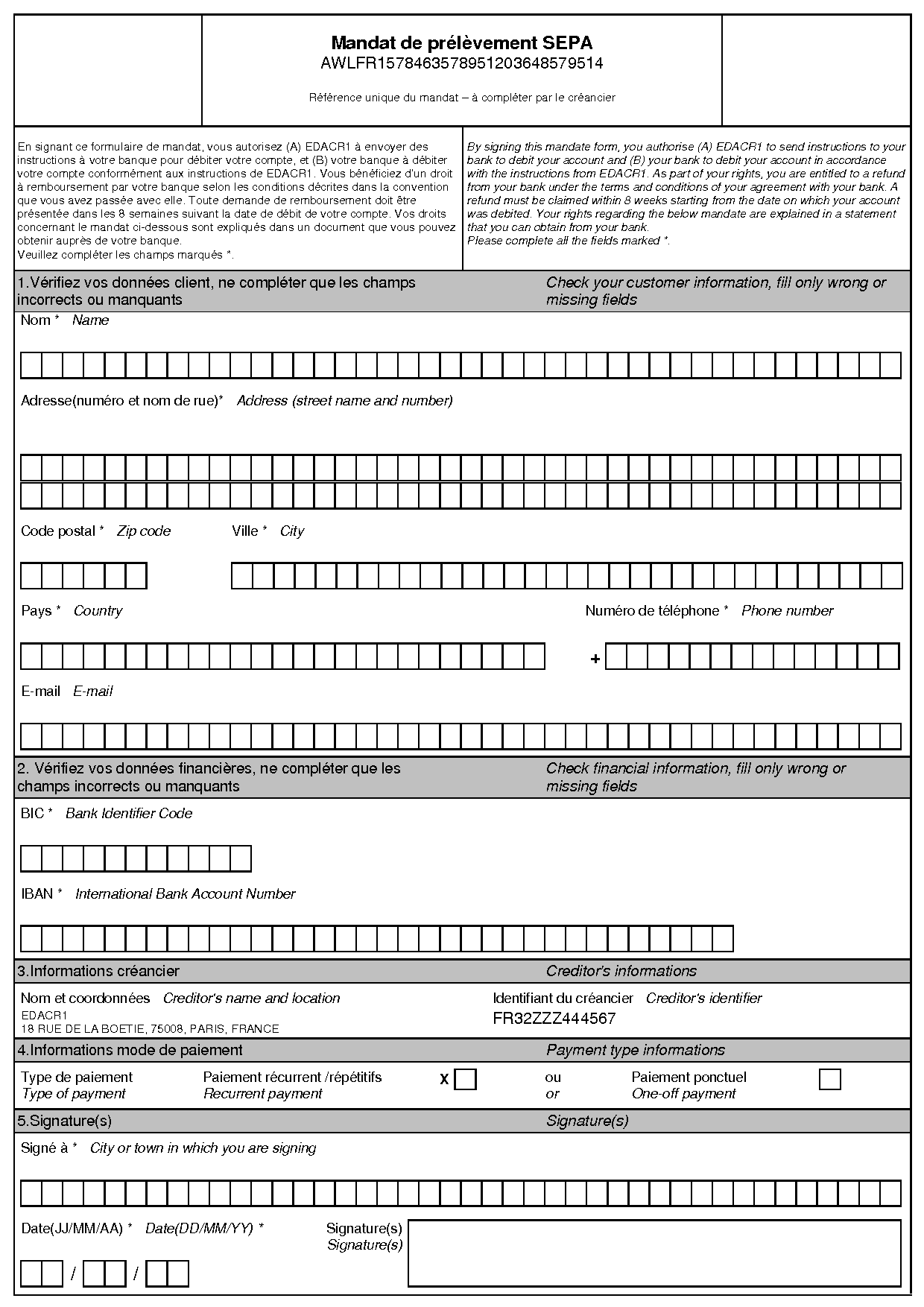SEPA Payment Suite enables the generation of paper forms for the creditor and/or the debtor in order to create a SEPA mandate when the form has been fully completed. The exchange methods supported for this operation are presented in
this table.
Upon receiving an application containing the number of forms to be generated, along with any UMRs to be reserved, SEPA Payment Suite checks the data format. If UMRs are included in the application, SEPA Payment Suite checks their uniqueness. Conversely, if the UMR is missing from the application, SEPA Payment Suite offers the possibility of generating this reference based on a configurable model.
Once these checks have been completed, the form is registered in the database and SEPA Payment Suite generates a response in accordance with the application exchange method: it indicates whether the applications have been fully or partially accepted or fully rejected, giving the reason for this rejection, if applicable. The UMRs in accepted applications and the UMRs in rejected applications are included in the response.
SEPA Payment Suite then generates the corresponding files to the accepted form applications. Depending on the creditor’s subscription to the delegated print service, these files are:
-
Sent to the creditor in PDF format through a notification (e-mail or postal mail);
-
They can be downloaded from the application GUI (PDF format).
The image below shows the result of a blank debtor data form generation:

Picture 8: Example SEPA mandate form
The appearance of the form can be customized with a logo of the creditor organization to respect the graphics charter of a particular creditor.